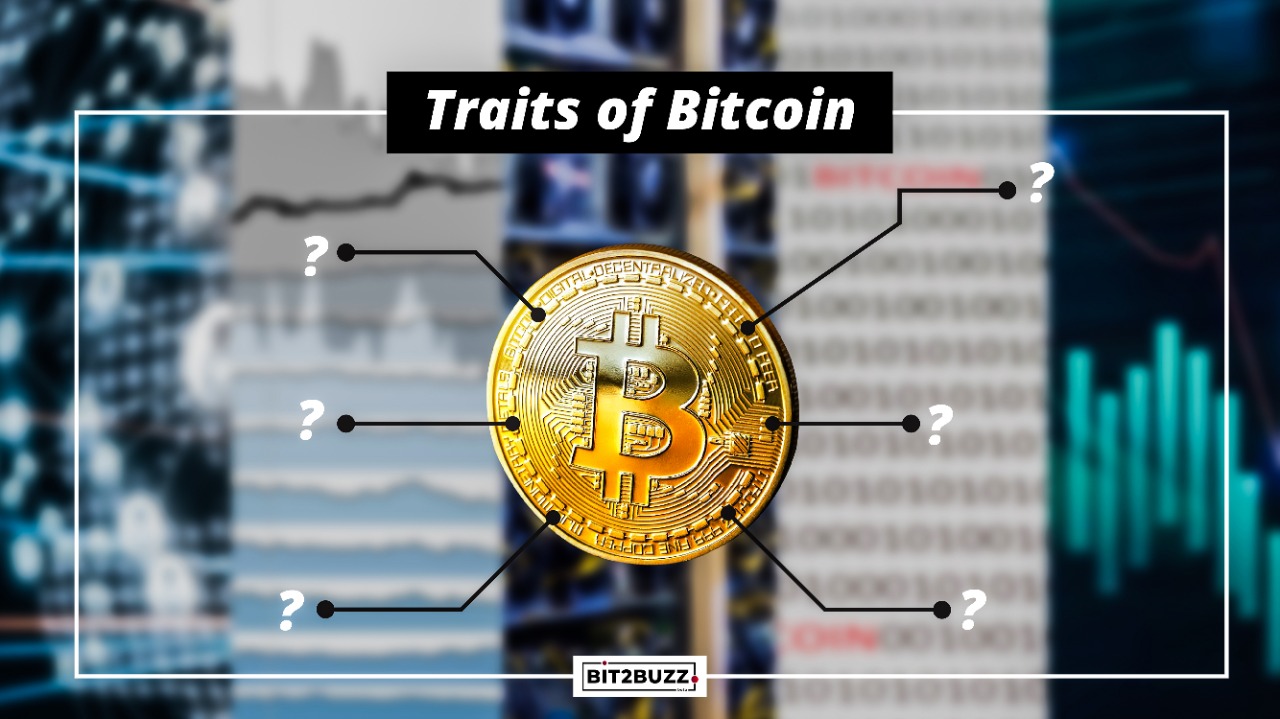Bitcoin is a digital asset that is used for investment and as a medium of exchange. It is one of the most popular digital currencies in existence, because of being the first cryptocurrency. Statistically, it is the leading cryptocurrency, based on market capitalization.
Let’s talk about the key attributes of Bitcoin, the first-ever digital currency.

Electronic Asset - Bitcoin is an electronic asset and currency, as mentioned above. However, it does not exist in a physical form, such as notes and coins. Thus, it exists only in electronic form and is transferred through internet-based electronic gadgets such as smartphones and computers. People can also transfer bitcoin using cryptocurrency exchanges and credit cards.
Decentralization: Bitcoin is decentralized because it has no control or manipulation from any central authorities like the government or international monetary body such as the World Bank. In other words, no one controls its movement, price, or transaction fees. In simple terms, the distributed ledger or Blockchain technology controls the function and properties of bitcoin. Blockchain technology essentially means an extensive network encompassing business entities, mining systems, and various nodes which determine its functionalities.
Pseudo anonymous: The public ledger/blockchain technology keeps every record of transactions involving bitcoin. However, in normal cases, these records do not tell the exact identity of the person or entity involved in the transaction. This is because when dealing with bitcoin, you use alphanumeric addresses that allow you to send and receive BTC without revealing your real identity as a person. However, it is pseudo-anonymous because people can use financial forensics on your public address to trace your real-world identity.

Bitcoin is portable: This means that it is very easy to transfer or move bitcoin from one wallet to another. Therefore, it is very easy to use bitcoin to buy goods and services at any time. There is no use of intermediaries, such as banks and physical currency. All that an individual needs is a proper internet-based gadget like a smartphone.
Scarcity: There is a limited supply of bitcoin, only amounting to 21 million. Therefore, there is no way of increasing the amount of BTC in circulation. Because of its finite supply, BTC has a very low inflation rate of about 1.8%.

Divisibility: Bitcoin can be divided into very small units of up to a hundred millionth. Of which, the smallest unit of a bitcoin is called a Satoshis/Sats. As noted, bitcoin is more divisible than any physical currency. This attribute enables people to make microtransactions, with precise values.
Bitcoin is fungible: Fungibility means that individual units of an asset are identical and people can interchange them. Therefore, the units perform similar functions at all times. Regarding BTC, its individual units like Satoshi are identical and interchangeable. This is the same principle with physical money. For instance, all United States' one-dollar notes are interchangeable and save the same purpose.
Valuable: Bitcoin has value as an investment asset or as a digital currency. However, it has no fixed value or price. The supply and demand of bitcoin determine its price. When the demand for bitcoin surpasses its supply, its price rises. On the other hand, when its supply is greater than the demand, the price falls. Notably, people demand bitcoin for both speculative and transaction motives.

Immutability: This means that no individual or entity can tamper with or reverse all transactions and records of transactions. Thus, these records will permanently exist on the immutable blockchain-based ledger.
Borderless: People securely send bitcoins across geographical boundaries, in any amount and at a very low cost, without involving third parties. As a result, people can pay for goods or services in any country of the world with no restrictions. Most notably, there are no conditions set by national governments or central authorities on payment limits as they do with physical money.
Bitcoin is peer-to-peer: Bitcoin uses peer-to-peer technology rather than a central authority such as banks or government. A network of computer systems around the world issues and manages bitcoin.

It is open-source: No one owns and controls bitcoin. It is public as everyone can obtain or use it, as long as he/she can do so.
Trust minimization: This property means the ability to mitigate harmful activities or agents. Cryptography protects bitcoin users from defectors like liars, thieves, and cheats.
Therefore, with bitcoin, people can carry out transactions with one another without using an intermediary or a trusted third party. Instead, they rely on digital signatures and public-key cryptography as security barriers to prevent attacks and “unforgeability”.

Bitcoin is programmable: The distributed ledger technology (DLT) or blockchain systems enable the creation and use of bitcoin. Thus without the blockchain, bitcoin will not exist.
Non-sovereignty issued: Bitcoin is not issued or controlled by the government or central authority such as a bank.
Censorship resistance: There is no single entity that can reverse a bitcoin transaction or blacklist a wallet or BTC address. This is because when someone makes a transaction, it is relayed from one node to another until most of them confirm the payment or transfer.
Conclusively, to treat bitcoin as sound money, it holds several superior attributes like censor- resistance, programmability, immutability, and trust minimization than those of physical forms of money like Gold and Fiat.








